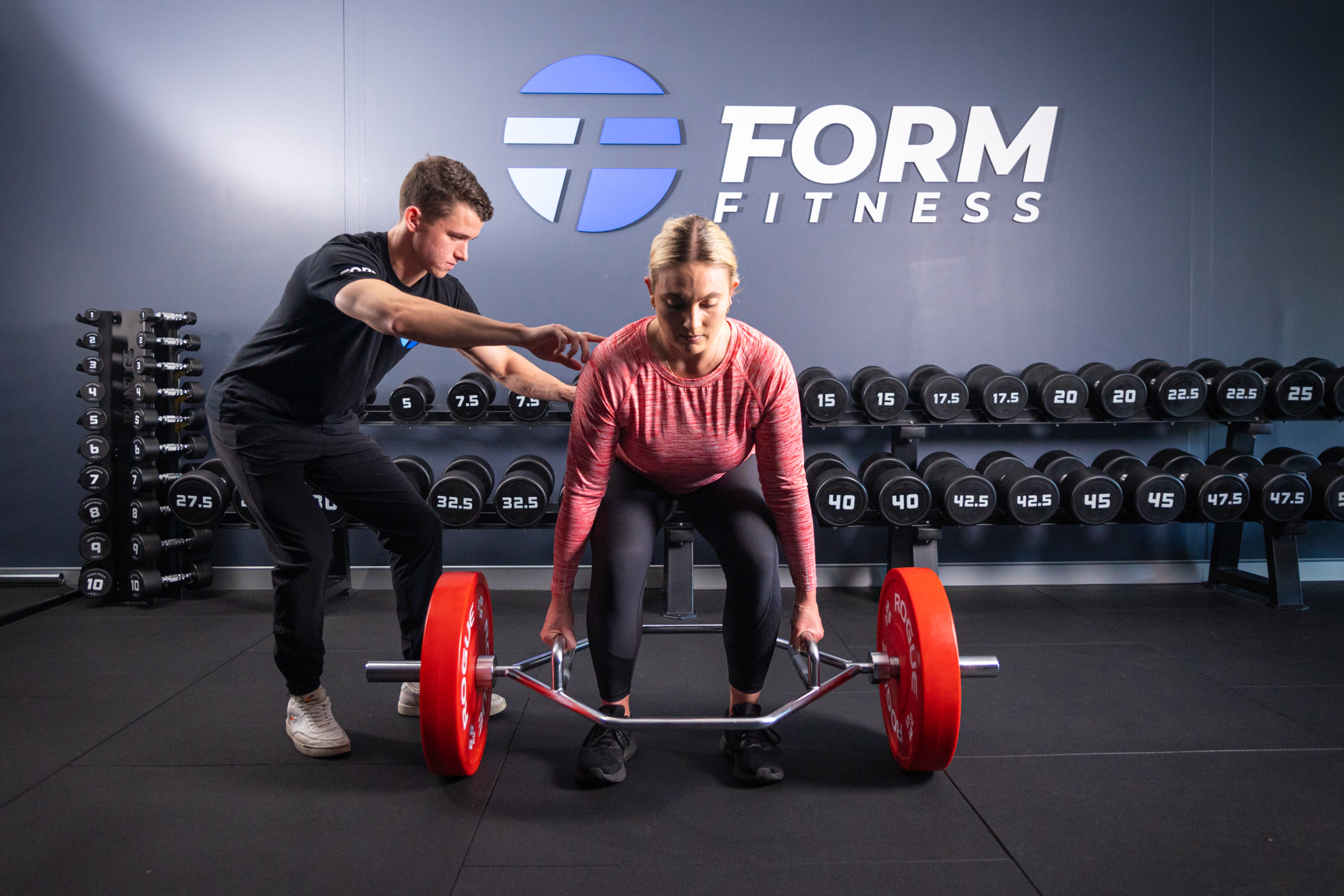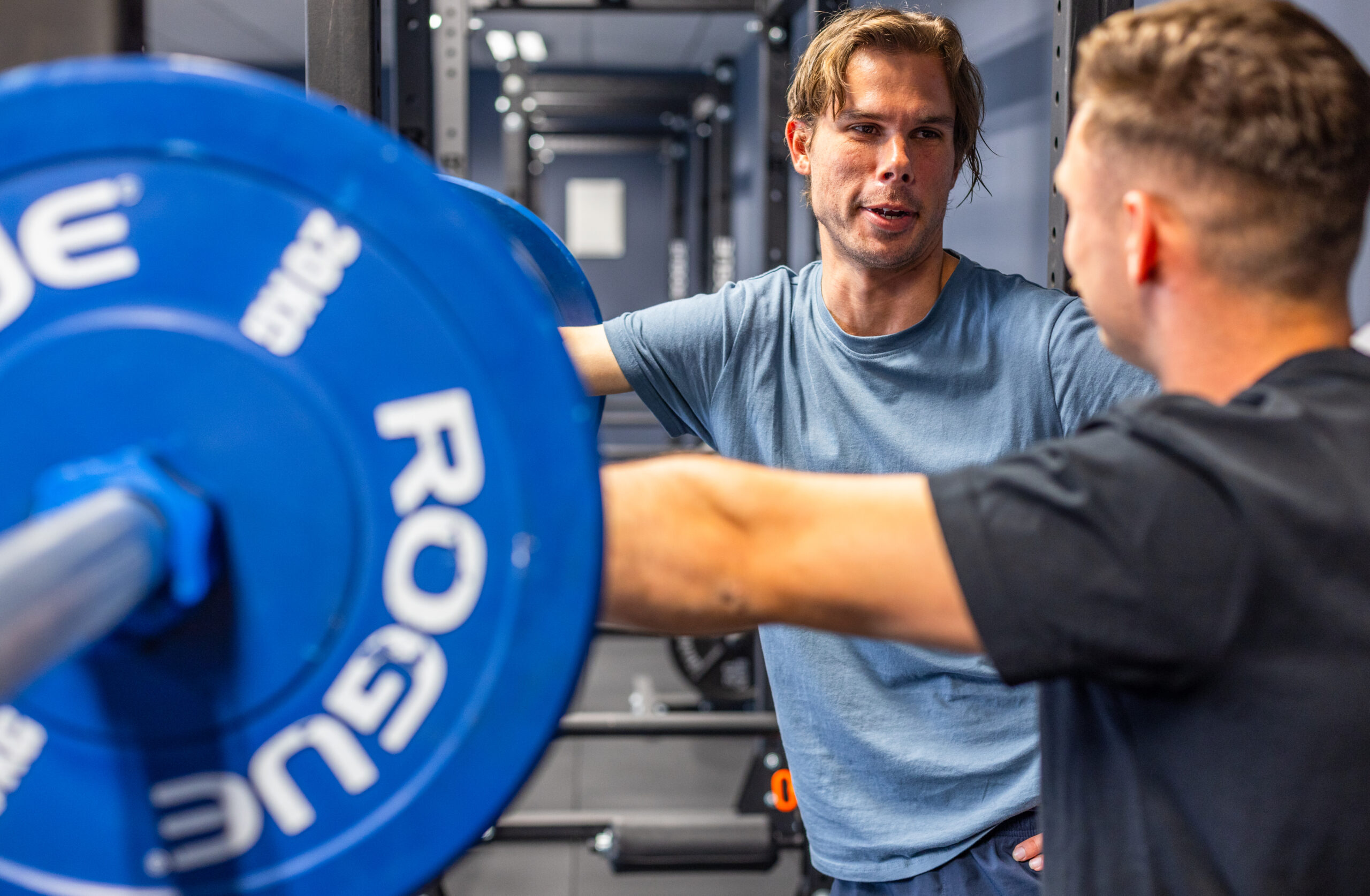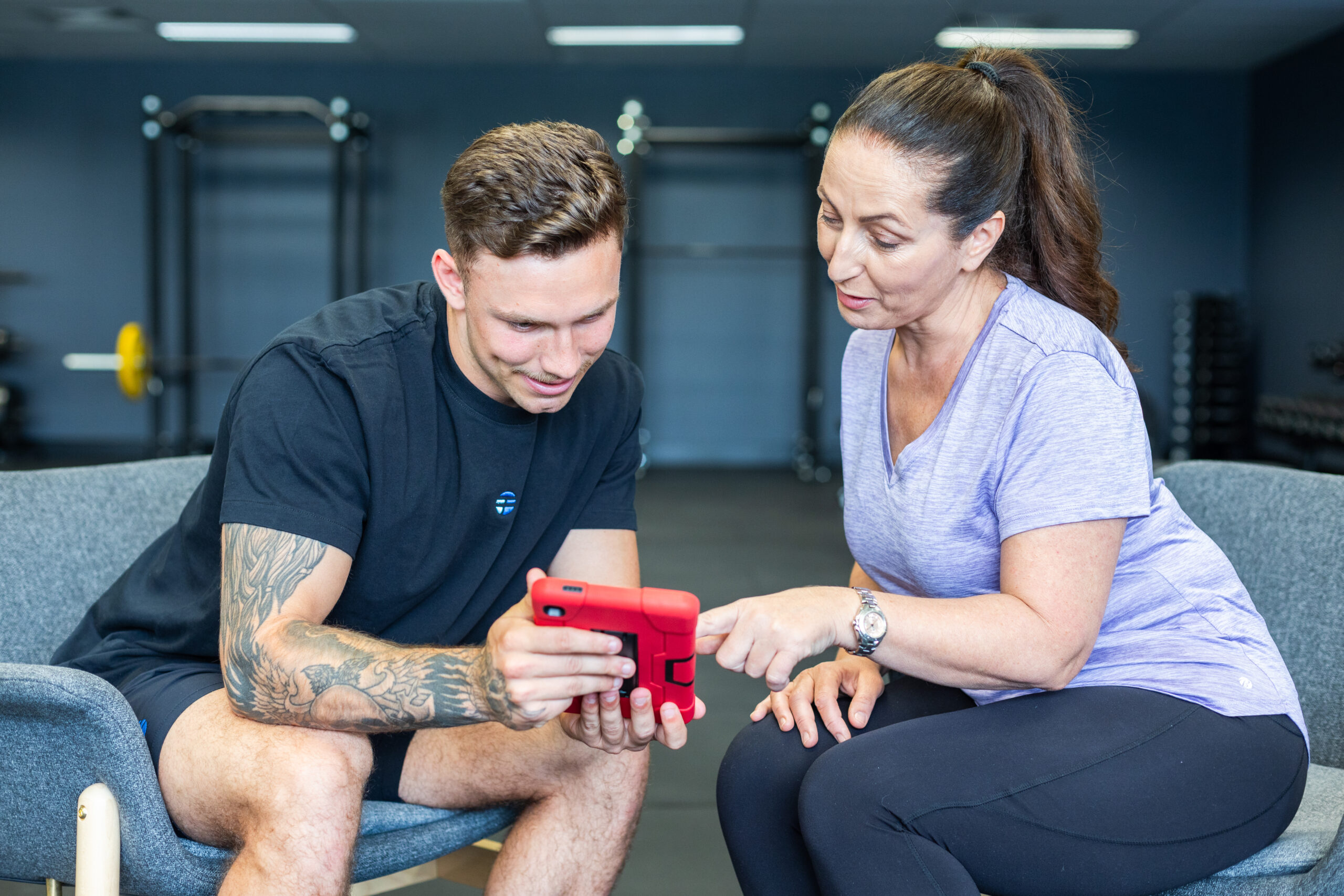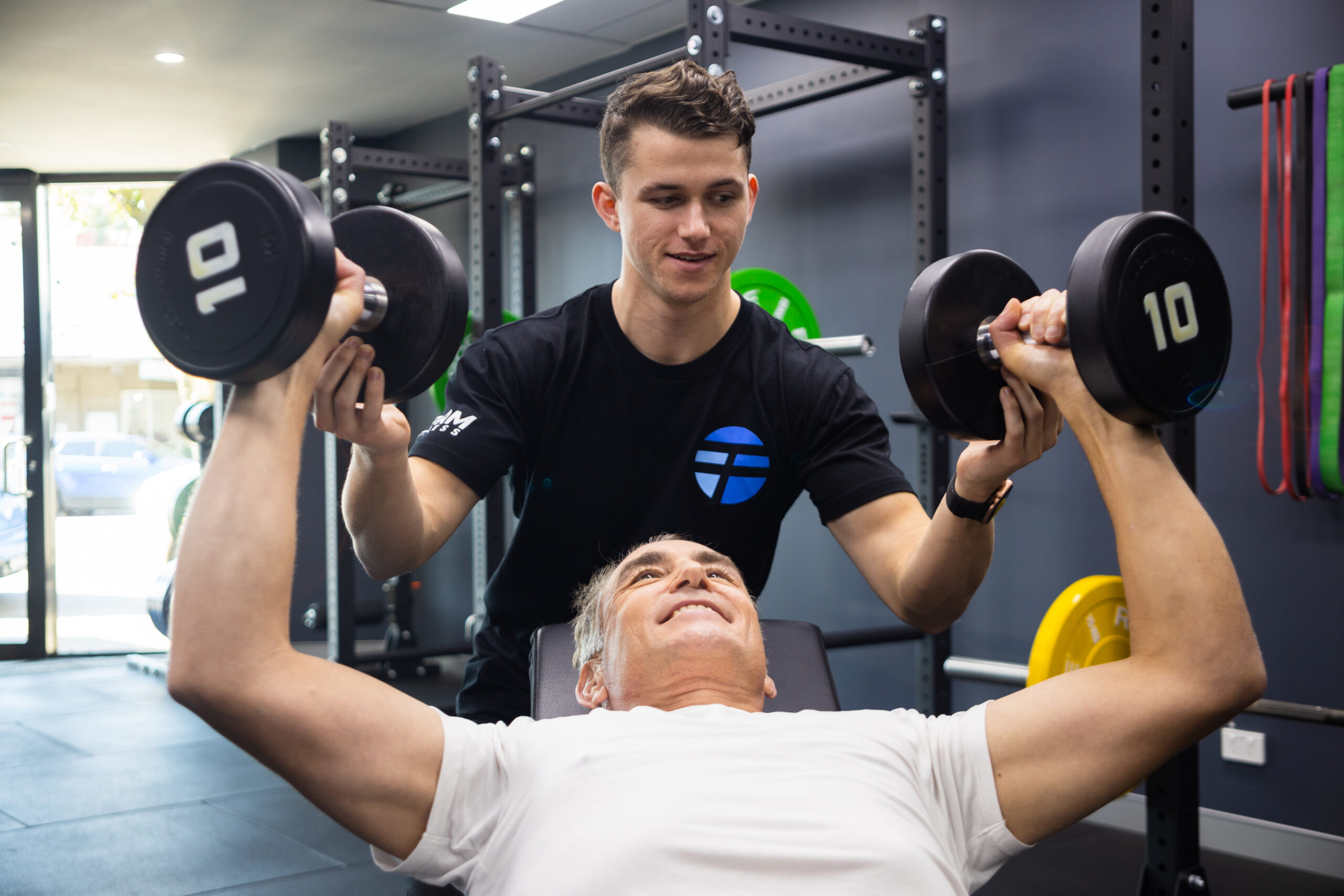Strength training can be an excellent way to stay fit and healthy while also helping you look your best. However, it’s important to learn the basics before diving in headfirst – that’s why we’ve put together this guide on the five basic strength training exercises everyone should know.
By mastering these foundational movements, you’ll have a solid base to build as you progress in your fitness journey. So if you’re ready to take charge of your health and get started with strength training, read on for our top tips!
Overview Of Strength Training
Strength training is an integral part of any fitness routine. It can help to build muscle mass, increase muscle strength and even improve posture. With proper form, strength training exercises are one of the best ways to work all major muscles.
There are many different types of resistance training that you can do, including weight training exercises, body weight exercises and basic movements such as squats and lunges.
The five most common strength training exercises are squats, deadlifts, bench presses, rows and overhead presses. Each exercise helps target a specific area or set of muscles while using other muscles for support.
Squats focus on the quadriceps muscles in your thighs, while deadlifts concentrate on your glutes and hamstrings. Bench presses allow you to develop upper chest strength by pushing up against a barbell placed across your chest. Rows use back and shoulder muscles when pulling weights towards you from a seated position. Finally, overhead presses involve pressing a barbell above your head to strengthen your arms’ deltoid and tricep muscles.
Though these five moves may seem intimidating at first glance, they’re easy enough for beginners with no previous experience to learn quickly with practice – make sure always to pay attention to proper form! Even if you don’t have access to weights or gym equipment at home, plenty of online variations will allow you to get effective workouts without leaving the house.
With perseverance and dedication, it’s possible to see actual results in muscle development over time through regular strength-training sessions – so don’t be afraid to try it!
We are moving on to our next section about lower-body push exercises like squats.
Squats (Lower Body Push)
Squats are a great way to start any strength training program, as they develop full-body muscle and power. They can also be used for rehabbing injuries, improving posture, and increasing mobility. Unsurprisingly, squats have become an essential part of the fitness world!
There are many different types of squats you can do. The most popular is the basic bodyweight squat which involves standing with your feet shoulder-width apart and bending your knees until your thighs are parallel to the floor.
You could also go for more advanced variations like goblet squats (holding a weight in front of you), reverse lunges (stepping one foot back at a time), or hip thrusts (using a barbell). All of these will help build lower body strength quickly and effectively.
Upper body exercises like bench presses, barbell chest presses, cable flyes, etc., should also be included in your routine if you want to get strong all over. These exercises target specific muscles in the upper body like your chest, shoulders, triceps, biceps, etc., so make sure to include them in your workout plan!
Finally, it’s important to remember that consistency is critical to developing strength and building muscle. Start by incorporating basic bodyweight squats into your routine every other day or so and then gradually work up from there – adding heavier weights or doing more reps as needed.
With regular practice and dedication, you’ll soon reap all the benefits this incredible exercise offers!
Hip Thrusts (Lower Body Pull)
Hip thrusts are an incredibly effective body exercise for strength training. This Strength Training Workout is a multi-joint barbell movement perfect for any strength training program. It’s an excellent way to increase your lower-body power and strengthen your glutes, hamstrings, and quads.
The hip thrust can be done with a barbell or dumbbell, making it a versatile exercise as part of any home workout routine.
Start by sitting on the floor in front of a bench or raised platform with your shoulder blades against their surface to make the move correctly. Place your feet flat on the ground, bend your knees slightly, and hold a barbell across your lap just above where thighs meet hips. Then press down through your heels while pushing up onto your upper back using gluteal muscles until you reach full extension at the top of the movement before slowly returning to starting position.
When performing hip thrusts, make sure that you keep good form throughout the entire exercise—this will help target all the right muscle groups. You should also breathe deeply during each rep so that you get enough oxygen into your system; this helps ensure maximum benefit from each set.
Additionally, focus on keeping the core tight and maintaining proper posture—aligning the spine with natural curvature—to avoid injury and fatigue.
If you’re looking for even more challenge when doing hip thrusts, consider adding bodyweight lunges between sets or super-setting them with another compound lift like squats or deadlifts for an extra push!
With practice and dedication, this powerful body weight training exercise can bring great rewards in terms of physical fitness, mental clarity, and improved overall well-being.
We are moving on to our next topic: chest press (upper body push).
Chest Press (Upper Body Push)
The chest press is a staple of any effective strength training routine and should be the cornerstone of an upper-body push program. It is one of the most fundamental exercises that can be used in bodyweight movements and barbell weight training programs.
As a beginner to barbell weight training, adding this exercise to your resistance training workouts will provide numerous benefits while helping you reach your goals faster. The chest press works multiple muscles at once, making it an ideal choice for those looking to maximise their lifts in the shortest amount of time possible.
The primary muscle groups worked during a chest press include the pectorals (chest), triceps, deltoids (shoulders) and abdominals. This exercise also recruits stabilising muscles such as the trapezius, rhomboids and latissimus dorsi.
In addition to building strength throughout these powerful muscle groups, several other benefits are associated with performing the chest press regularly. These include improved posture due to increased core stabilisation, greater bone density from safely lifting heavier weights over time, better joint mobility thanks to regular stretching before or after each session and improved muscular balance across affected areas – all leading to fewer chances of injury.
When starting your strength training workout program, make sure to use proper form when executing a chest press: keep your back flat against the bench/floor and squeeze your shoulder blades together while pushing up until elbows become fully extended straight above shoulders; then lower it slowly back down towards centerline of the body again repeat for the desired number of reps! Doing so will help ensure maximum safety and effectiveness when performing this critical exercise which can bring invaluable rewards!
Bent Over Row (Upper Body Pull)
The bent-over row is an essential part of any strength training program. It’s an excellent upper-body pull to help develop total body strength and shape. This exercise has existed for many years but remains one of the most popular bodyweight movements in modern-day fitness programs.
You should use proper form and technique to ensure maximal safety and results when performing the bent-over row. Start by standing with your feet shoulder-width apart and bending at your hips until your torso is parallel to the ground or slightly above.
You can perform this movement using a cable row machine or barbells; however, if you are starting, stick with a lighter weight before progressing onto heavier weights.
For those looking to add more variety to their workout routine, there are advanced variations of the bent-over row, such as single-arm, unilateral, and pause reps. These all provide unique benefits for building muscle mass and improving overall performance.
Aim for 2-3 minutes of rest between sets when including heavy weights in your bent-over-row exercises to get the best results from each set.
At its core, the bent-over row helps build full body strength while targeting muscles like the back and biceps that need extra attention during regular pull-up strength training workouts. With correct form and good execution, this exercise can help improve posture and increase power output allowing athletes to reach new heights in their sport-specific goals.
Side Twists (Core)
Strength training routines are an essential part of any fitness routine. A personal trainer can help you create a plan that helps build your strength and muscle while also helping you reach your desired level of strength and body fat. Starting with the right workout plan is essential in building a solid foundation for various exercises to ensure optimal performance gains.
The five basic strength training exercises are:
- Bent over rows (upper body pull)
- Squats (lower body push)
- Bench presses (upper body push)
- Deadlifts (total body lift)
- Side twists (core)
These movements form the basis for most weightlifting programs because they all target major muscle groups, which will aid in developing overall muscular endurance and power. When training for weight loss or increased lean mass, these five exercises should be included in any program when performed at varying intensities using appropriate loads.
Side twists work on core stability and provide additional benefits such as improved posture, balance and coordination. This exercise requires slow, controlled movements while engaging your abdominal muscles throughout its entire range of motion; often, this can be more challenging than other traditional core exercises like sit-ups or crunches.
To get the best results from this exercise, include rest days between sets so you don’t fatigue too quickly and avoid injury by utilising the correct technique when performing each rep.
When focusing on key muscles for strengthening the body, incorporating these five moves into your regular routine will help provide the necessary base before exploring further variations of compound lifts and isolation exercises. Doing so may lead to better long-term success during your journey towards achieving more significant physical fitness goals!
Focus On Key Muscles For Strength
When building strength, no single workout is suitable for everyone. That’s why it’s essential to focus on balanced strength training that works all the major muscle groups of your body.
Weight training can be an excellent way to increase power and endurance while strengthening specific muscles in a focused manner. Circuit training is also great for getting a full-body workout without spending too much time on any one move.
You should include several key exercises for serious weightlifters looking to take their game up a notch. When using free weights such as dumbbells or barbells, the bench press and squats are classic moves targeting multiple muscle groups simultaneously. You can also incorporate push-ups into your workouts, which work the chest, triceps, and shoulders. Walking lunges provide an intense lower body burn and require good form and balance to complete correctly.
Bodybuilding competitions call for even more specialised movements depending on the class athletes compete in. Competitors will often perform unique exercises targeting specific areas of their bodies like calf raises or bicep curls with heavier weights than regular lifters would use. When doing any resistance training, you must maintain proper body position throughout each exercise to avoid unnecessary strain on any muscles or joints.
Focused weight training can help you meet your fitness goals, whether it involves gaining muscle mass or toning up existing muscles. Whatever your goal, having clear objectives before beginning your routine helps keep you motivated during tough workouts – because staying consistent over time is really how progress is made!
To ensure success when starting, stick with basic compound lifts and add new variations gradually as you become stronger and more confident in different positions/movements. With this approach, you’ll be well on your way towards achieving optimal results.
The Only 5 Weight Training Exercises You Need
When it comes to strengthening your body, basic strength training exercises are essential. From bodyweight movements to barbell lifts, the right exercise can help you build muscle and lose weight at a steady rate of one or two pounds per week.
Here is an overview of five simple but effective exercises that should form the foundation of any strength-training program:
- Push-ups: This classic bodyweight exercise works all major upper-body muscles, including your chest, shoulders, triceps and abs. You don’t need push-up equipment; maintain good posture throughout each rep.
- Walking Lunges: Strengthen both your legs and core with this functional movement. It also helps increase balance and coordination, which is essential for injury prevention in other sports activities. Keep a straight back as you do walking lunges to avoid rotator cuff injuries or bone-related injuries due to poor posture.
- Bench Presslie Face-up: This popular lift strengthens your chest, arms, shoulders and core simultaneously, allowing you to lift heavier weights than most other moves (when done safely). Keep proper form when doing bench presses by keeping your elbows close to your torso instead of flaring them out wide during the movement.
- Plank Position: This seemingly simple move targets many different muscle groups at once, such as the abdominals, obliques (sides), lats (upper back) and deltoids (shoulders). Plus, it’s an excellent overall stabiliser for athletes who engage in contact sports, where balance is critical for performance on the field or court.
These five basic strength training exercises provide a great starting point for anyone looking to get fit and stay healthy without spending time in the gym or investing in expensive equipment—but they shouldn’t be the only components of a comprehensive workout routine! With its impact on metabolism and health in general, regular physical activity extends far beyond simply building stronger muscles—so find what works best for you and enjoy the journey!
Metabolism And Health
Strength training is an essential part of any workout routine, as it can help to increase muscle mass and strength while burning additional calories. Using light weights for basic body movements such as squats or upper body presses may seem like little. However, they are beneficial in terms of calorie-taxing activity and cardiovascular health.
Heavy weight lifting has its place, too; however, this should only be done if you have access to a trainer who can ensure proper form to reduce the risk of falls or injury.
Training books offer great ideas for strength training routines involving heavy and light exercises. However, these routines don’t need to be overly complicated: simple exercises focusing on major muscle groups will do just fine! For those looking for more variety, plenty of other activities are available that focus on functional fitness – from yoga to Pilates to obstacle courses and beyond.
The benefits from strength training go well beyond physical appearance – improved posture helps protect against back pain, increased bone density reduces the risk of osteoporosis later in life, and stronger muscles mean your daily tasks become easier to accomplish without feeling winded after five minutes! Additionally, incorporating resistance into your workouts increases stamina and mental acuity during exercise sessions.
With all these potential advantages, strength training might initially sound intimidating, but with the proper guidance, it can be manageable even for beginners. And although it may take some time before you start seeing results, rest assured that they’ll come soon enough when consistency becomes second nature.
Moving forward, we’ll look at how complex (or simple) weight training needs to be.
Is Weight Training Really That Complicated?
Transitioning from the previous section about metabolism and health, let’s discuss weight training and its complexity.
Weight training is a great way to build strength and make subtle changes to your body. It’s not as complicated as it looks, however. You can start by using basic bodyweight movements such as push-ups, squats, pull-ups, lunges, etc., all great exercises for building strength. Once you get more comfortable with those, you can add complex exercises like barbell back squats or deadlifts.
If you’re feeling overwhelmed trying to figure out what specific exercise plan is best for you – don’t worry! All you need are 4-5 significant compound movements that work for different muscle groups to create a well-rounded foundation for building strength.
That being said, here are some tips: firstly, watch regular video form checks of yourself doing each movement so that your technique stays consistent; secondly, keep things digestible and try to focus on one small thing at a time; thirdly, vary rep ranges between sets and finally have fun – if something doesn’t feel right stop immediately!
Weightlifting does not have to be intimidating or overwhelming once you understand how it works. With these simple steps, anyone can easily build personal body training plans to help them reach their goals quicker.
Start slow and never compromise form for speed – if something feels wrong, take the time to look into fixing it correctly instead of rushing through it blindly. If done properly with patience and consistency – there should be no reason why someone cannot benefit significantly from weight training exercises!
Final Thoughts
In conclusion, weight training does not have to be complicated.
You can get all the benefits of strength training with just a few basic movements, such as squats, hip thrusts, chest presses and bent-over rows.
Furthermore, studies show that regular strength training can improve your metabolism by 7%, improving body composition and energy levels.
So if you’re looking for an effective way of getting healthy, try these five basic exercises and see what they can do for you!
Remember to focus on key muscles when lifting weights to reap even more fantastic health rewards associated with strength training.






